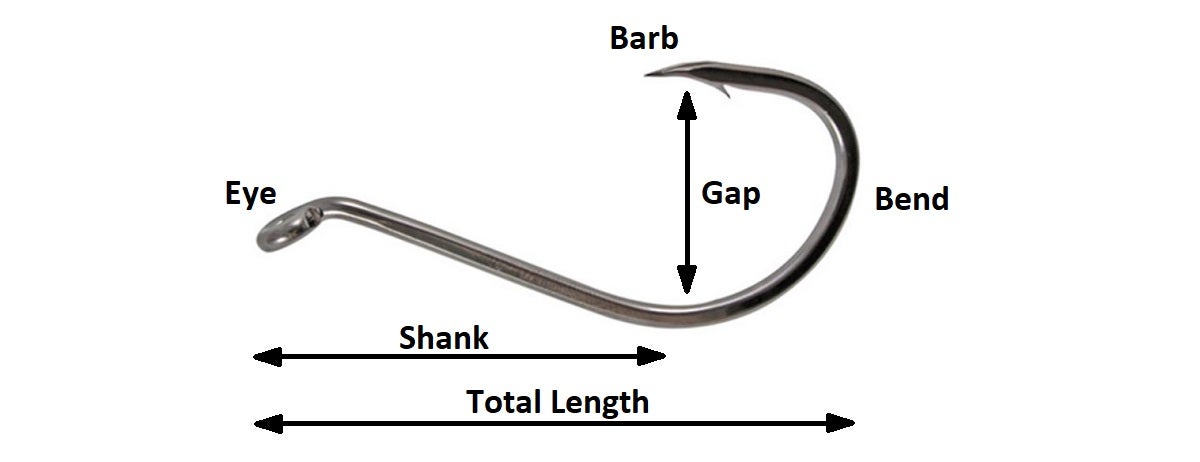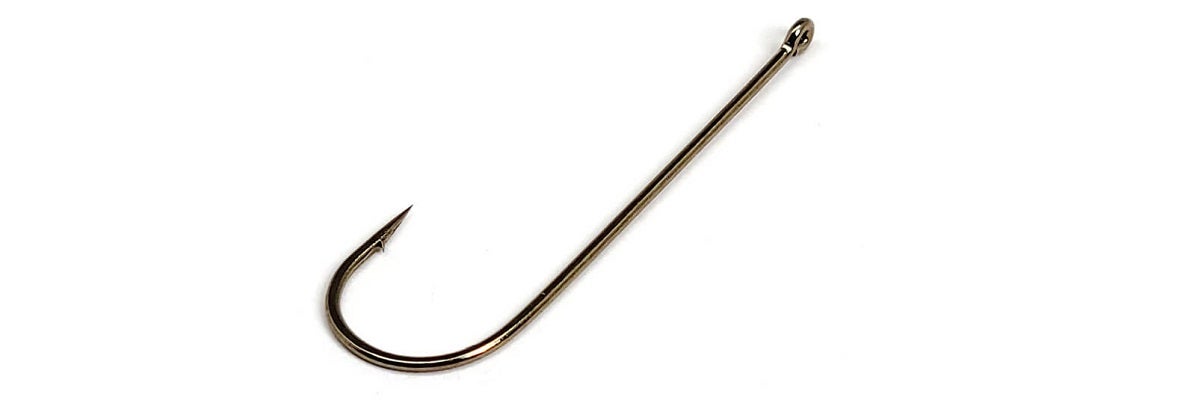The Guide to Fishing Hooks: Types, Sizes & Use for all your Fishing Needs
Travis Olander 08.23.23

Picking the right line and lure can make or break your day on the water, but even experienced anglers can overlook the importance of picking the right fishing hooks. Pick fishing hooks that’re too large or small, and you’ll fail to get any bites. Use the wrong hook for your bait, and the presentation will be all wrong – spooking the fish. Pick the wrong type of hook, and you could lose your bait or even get caught up in debris and lose your line and bait altogether. The right hook is more important than you might think. It could make the difference between a fun day of reeling in some fun fighters, and a wasted day that only landed you a sunburn.
Fishing Coverage on AllOutdoor
- Daiwa Exceler LT Spinning Reel – Budget Friendly, Premium Performance
- Tungsten Crappie King Jigs New from Northland Fishing Tackle
- A Day in South Korea – Fishing from Shore on Jeju Island
- Daiwa’s NEW PROREX XT Line of Muskie Casting Rods
Parts of Fishing Hooks
Fishing hook sizes can be confusing. There are different formats and numbers that describe a hook’s size. You might see hooks listed as “1/0”, “#22”, or “#3 1X.” Confused? Let’s first break down the anatomy of a fishing hook to figure out what all these numbers means.
- Total Length: This is the length of the hook shaft, measured between the eye and the bend.
- The Shank: This is the length of the hook shaft between the eye and tip of the hook’s barb.
- The Bend: The point wherein the shaft curves to form the barb and tip.
- The Gap: The distance between the barb and the shank.
- The Eye: The hole atop the shaft used to tie your line.
Fishing Hook Sizes
Now we know the components of a typical hook, so we can understand hook sizes. Hook sizes range from 32 to 1, then from 1/0 to 19/0. In the “32-to-1” range, smaller numbers denote bigger hooks. But in the “1/0-to-19/0” range, larger numbers denote larger hooks.
Confusing? Yes. But it gets worse: A hook advertised with a “2X” or similar alphanumeric at the end of its size means its shaft length is longer than normal. For example, a “#3 1X” hook has a shaft length that is one size longer. That shaft would normally be found on a #2 hook. And a “#3 2X” hook has a shaft length two sizes longer; it would normally be found on a #1 hook.
If all this wasn’t bad enough, know that hook sizes aren’t even universal: A #9 hook from one manufacturer might be larger or smaller than a #9 hook from a different maker. Advertised hook sizes will merely get you in the ballpark range of what you’re looking for. It pays to stick with a particular hook maker, and measure your chosen hooks in inches or centimeters.
Fishing Hook Types
All the hooks you’ve seen above are bait hooks — the most common type of fishing hook. No matter the fish or waters, a classic bait hook in the appropriate size will land some bites. But you can improve your lure’s or bait’s presentation to entice more fish (and reduce the chances of snagging your line) by investing in particular types of fishing hooks.
Bait Hook
The bait hook is the “do-it-all” fish catcher, and it’s well suited in most environments. It sports a relatively short shank with a comparatively wide gap to accommodate a variety of plastic and smaller live baits. Bait hooks have either straight or angled eyes, and they tend to sport larger barbs than other hooks.
Aberdeen Hook
The Aberdeen hook is easily recognized by its long shaft, U-shaped bend, and straight tip. These hooks are specifically designed for live bait fish. Their shape and thin gauge reduce harm to the fish while hooked, allowing it to remain lively and swim with little restriction.
Fish Egg Hook
Stout, wide and sporting a long tip with an angled eye, the fish egg hook is made for the bait of the same name. They’re perfect for casting salmon eggs, dough balls, corn bits, and other scented ball baits.
Worm Hook
Worm hooks are made for soft plastic worms. The wide gap and thin tip encourage deep bites for reliable hook setting, while the elbow below the eye helps to hold a proper Texas rig.
Jig Hook
Jig hooks do well in weedy waters and debris fields, as their presentation forces the hook to ride facing the topwater. The 90-degree elbow below the eye also helps to reduce snagging, while providing a point of anchor for your jig head. Jig hooks are great for trout and fly fishing, and their point-up presentation encourages better hook sets.
Weedless Hook
Tired of catching logs and weeds? Cut too many lines loose in your local fishing spot? The weedless hook may help. These hooks sport plastic guards running from the eye to below the barb. The guard wicks plants and debris from the tip and barb, but collapses under a bite, allowing the hook to set.
Knots Matter, Too
The right knot can influence your bait or lure presentation just as much as the hook you’re using. Learn how to tie a Snell Knot, and see why it should be used for your offset rigs.







